Peter J. Olver
En masse scanning and automated surfacing of small objects using Micro-CT
Oct 09, 2024



Abstract:Modern archaeological methods increasingly utilize 3D virtual representations of objects, computationally intensive analyses, high resolution scanning, large datasets, and machine learning. With higher resolution scans, challenges surrounding computational power, memory, and file storage quickly arise. Processing and analyzing high resolution scans often requires memory-intensive workflows, which are infeasible for most computers and increasingly necessitate the use of super-computers or innovative methods for processing on standard computers. Here we introduce a novel protocol for en-masse micro-CT scanning of small objects with a {\em mostly-automated} processing workflow that functions in memory-limited settings. We scanned 1,112 animal bone fragments using just 10 micro-CT scans, which were post-processed into individual PLY files. Notably, our methods can be applied to any object (with discernible density from the packaging material) making this method applicable to a variety of inquiries and fields including paleontology, geology, electrical engineering, and materials science. Further, our methods may immediately be adopted by scanning institutes to pool customer orders together and offer more affordable scanning. The work presented herein is part of a larger program facilitated by the international and multi-disciplinary research consortium known as Anthropological and Mathematical Analysis of Archaeological and Zooarchaeological Evidence (AMAAZE). AMAAZE unites experts in anthropology, mathematics, and computer science to develop new methods for mass-scale virtual archaeological research. Overall, our new scanning method and processing workflows lay the groundwork and set the standard for future mass-scale, high resolution scanning studies.
Use and Misuse of Machine Learning in Anthropology
Sep 06, 2022
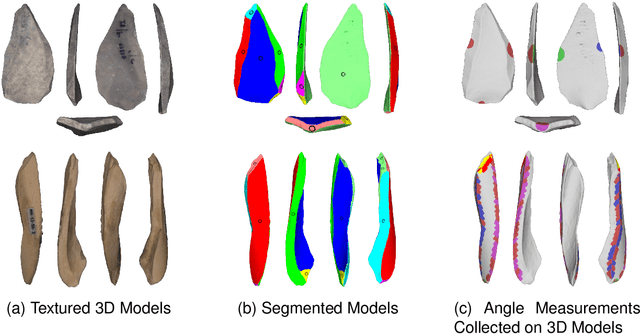
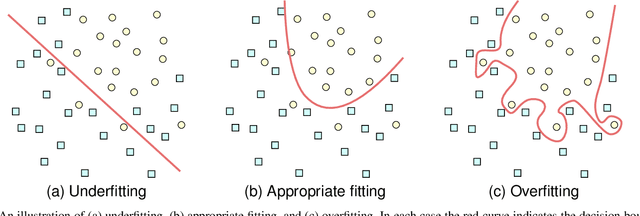
Abstract:Machine learning (ML), being now widely accessible to the research community at large, has fostered a proliferation of new and striking applications of these emergent mathematical techniques across a wide range of disciplines. In this paper, we will focus on a particular case study: the field of paleoanthropology, which seeks to understand the evolution of the human species based on biological and cultural evidence. As we will show, the easy availability of ML algorithms and lack of expertise on their proper use among the anthropological research community has led to foundational misapplications that have appeared throughout the literature. The resulting unreliable results not only undermine efforts to legitimately incorporate ML into anthropological research, but produce potentially faulty understandings about our human evolutionary and behavioral past. The aim of this paper is to provide a brief introduction to some of the ways in which ML has been applied within paleoanthropology; we also include a survey of some basic ML algorithms for those who are not fully conversant with the field, which remains under active development. We discuss a series of missteps, errors, and violations of correct protocols of ML methods that appear disconcertingly often within the accumulating body of anthropological literature. These mistakes include use of outdated algorithms and practices; inappropriate train/test splits, sample composition, and textual explanations; as well as an absence of transparency due to the lack of data/code sharing, and the subsequent limitations imposed on independent replication. We assert that expanding samples, sharing data and code, re-evaluating approaches to peer review, and, most importantly, developing interdisciplinary teams that include experts in ML are all necessary for progress in future research incorporating ML within anthropology.
Using machine learning on new feature sets extracted from 3D models of broken animal bones to classify fragments according to break agent
May 20, 2022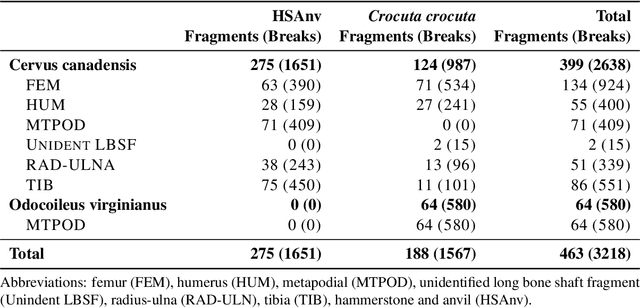
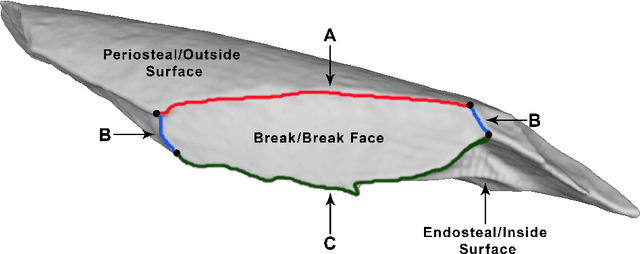
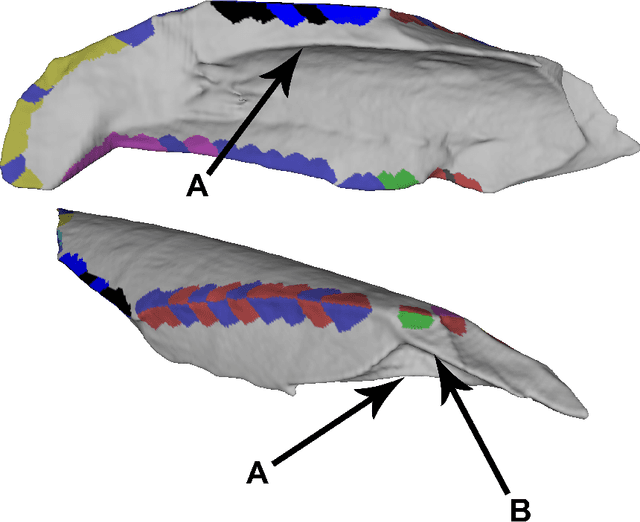
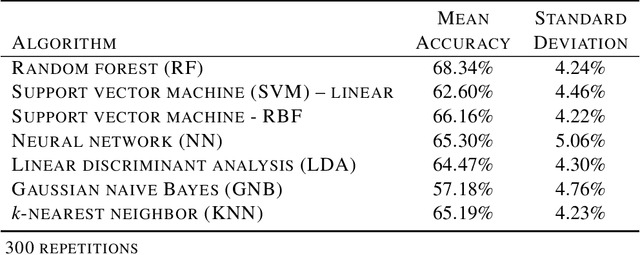
Abstract:Distinguishing agents of bone modification at paleoanthropological sites is at the root of much of the research directed at understanding early hominin exploitation of large animal resources and the effects those subsistence behaviors had on early hominin evolution. However, current methods, particularly in the area of fracture pattern analysis as a signal of marrow exploitation, have failed to overcome equifinality. Furthermore, researchers debate the replicability and validity of current and emerging methods for analyzing bone modifications. Here we present a new approach to fracture pattern analysis aimed at distinguishing bone fragments resulting from hominin bone breakage and those produced by carnivores. This new method uses 3D models of fragmentary bone to extract a much richer dataset that is more transparent and replicable than feature sets previously used in fracture pattern analysis. Supervised machine learning algorithms are properly used to classify bone fragments according to agent of breakage with average mean accuracy of 77% across tests.
The Batch Artifact Scanning Protocol: A new method using computed tomography to rapidly create three-dimensional models of objects from large collections en masse
May 05, 2022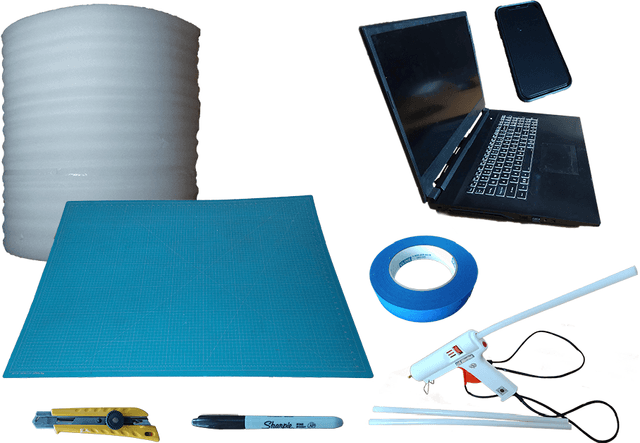
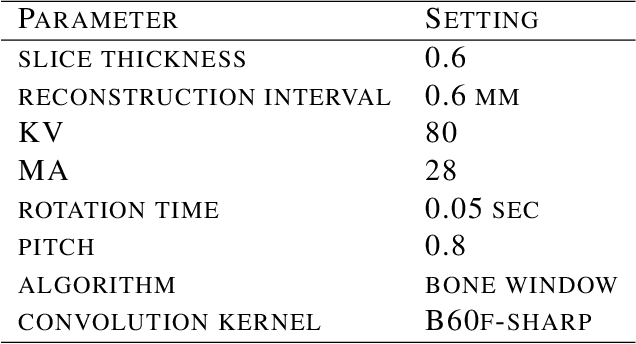
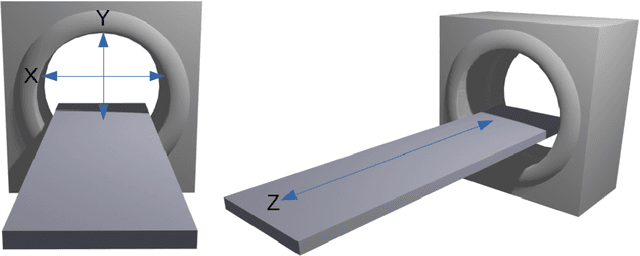
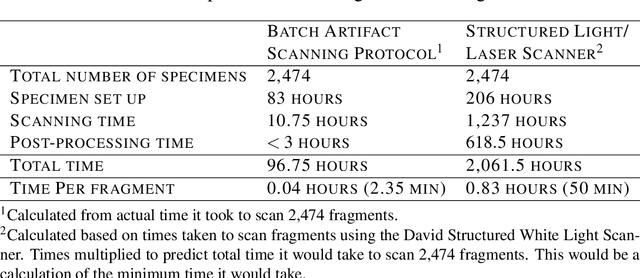
Abstract:Within anthropology, the use of three-dimensional (3D) imaging has become increasingly standard and widespread since it broadens the available avenues for addressing a wide range of key issues. The ease with which 3D models can be shared has had major impacts for research, cultural heritage, education, science communication, and public engagement, as well as contributing to the preservation of the physical specimens and archiving collections in widely accessible data bases. Current scanning protocols have the ability to create the required research quality 3D models; however, they tend to be time and labor intensive and not practical when working with large collections. Here we describe a streamlined, Batch Artifact Scanning Protocol we have developed to rapidly create 3D models using a medical CT scanner. Though this method can be used on a variety of material types, we use a large collection of experimentally broken ungulate limb bones. Using the Batch Artifact Scanning Protocol, we were able to efficiently create 3D models of 2,474 bone fragments at a rate of less than $3$ minutes per specimen, as opposed to an average of 50 minutes per specimen using structured light scanning.
The Virtual Goniometer: A new method for measuring angles on 3D models of fragmentary bone and lithics
Nov 10, 2020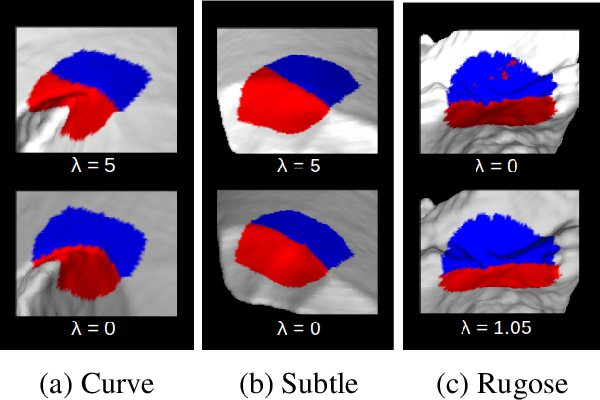
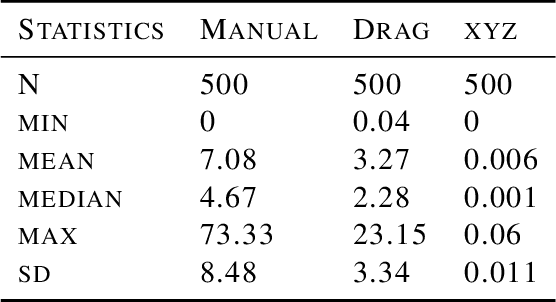
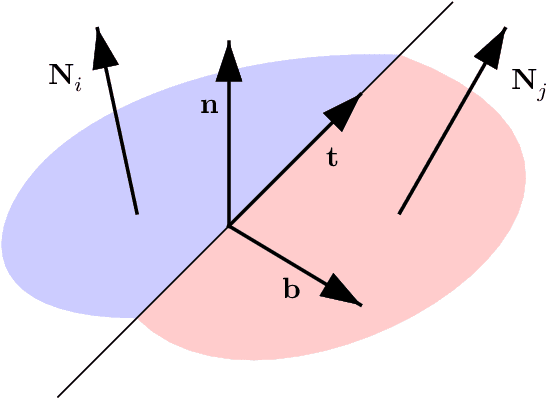

Abstract:The contact goniometer is a commonly used tool in lithic and zooarchaeological analysis, despite suffering from a number of shortcomings due to the physical interaction between the measuring implement, the object being measured, and the individual taking the measurements. However, lacking a simple and efficient alternative, researchers in a variety of fields continue to use the contact goniometer to this day. In this paper, we present a new goniometric method that we call the virtual goniometer, which takes angle measurements virtually on a 3D model of an object. The virtual goniometer allows for rapid data collection, and for the measurement of many angles that cannot be physically accessed by a manual goniometer. We compare the intra-observer variability of the manual and virtual goniometers, and find that the virtual goniometer is far more consistent and reliable. Furthermore, the virtual goniometer allows for precise replication of angle measurements, even among multiple users, which is important for reproducibility of goniometric-based research. The virtual goniometer is available as a plug-in in the open source mesh processing packages Meshlab and Blender, making it easily accessible to researchers exploring the potential for goniometry to improve archaeological methods and address anthropological questions.
Computation of Circular Area and Spherical Volume Invariants via Boundary Integrals
May 06, 2019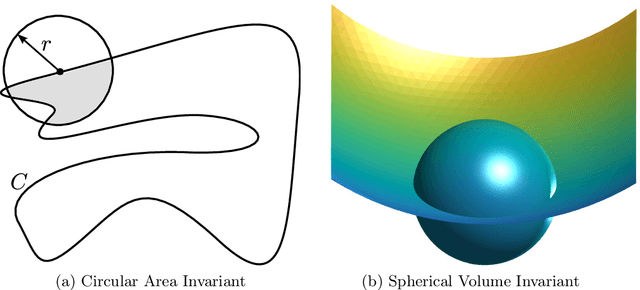

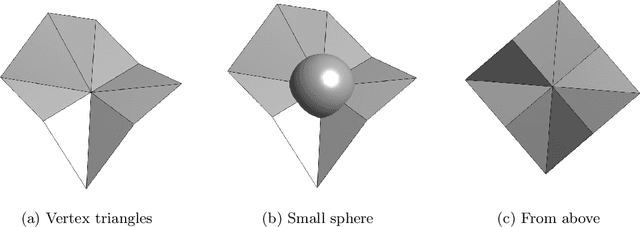
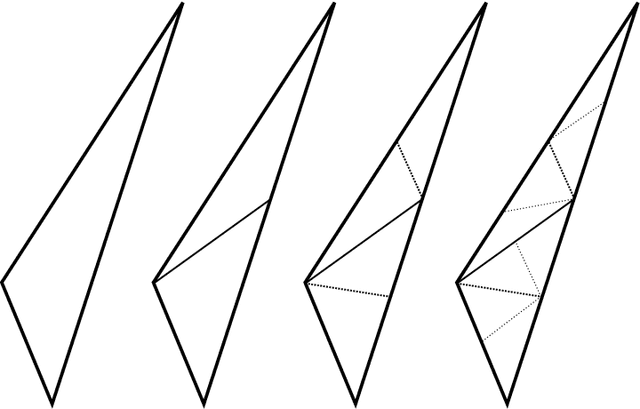
Abstract:We show how to compute the circular area invariant of planar curves, and the spherical volume invariant of surfaces, in terms of line and surface integrals, respectively. We use the Divergence Theorem to express the area and volume integrals as line and surface integrals, respectively, against particular kernels; our results also extend to higher dimensional hypersurfaces. The resulting surface integrals are computable analytically on a triangulated mesh. This gives a simple computational algorithm for computing the spherical volume invariant for triangulated surfaces that does not involve discretizing the ambient space. We discuss potential applications to feature detection on broken bone fragments of interest in anthropology.
Affine Differential Invariants for Invariant Feature Point Detection
Mar 12, 2018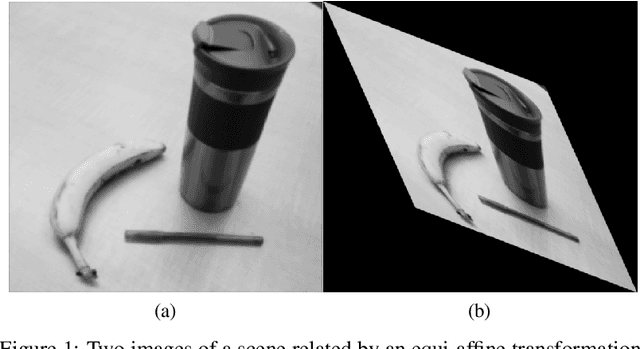
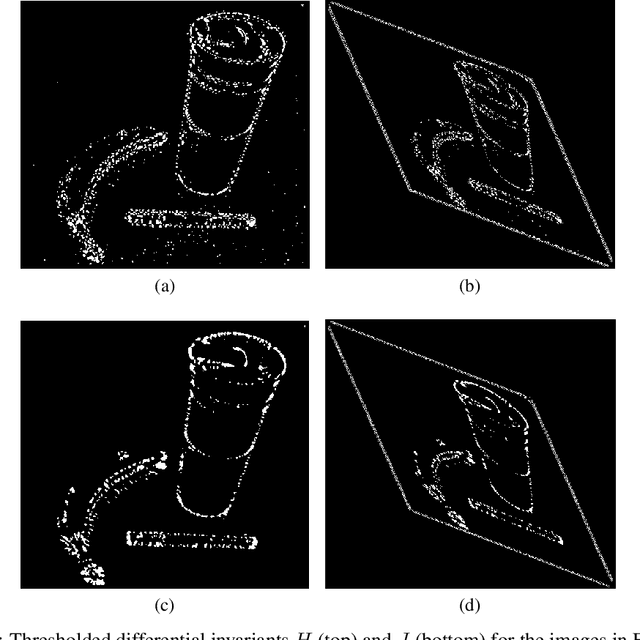
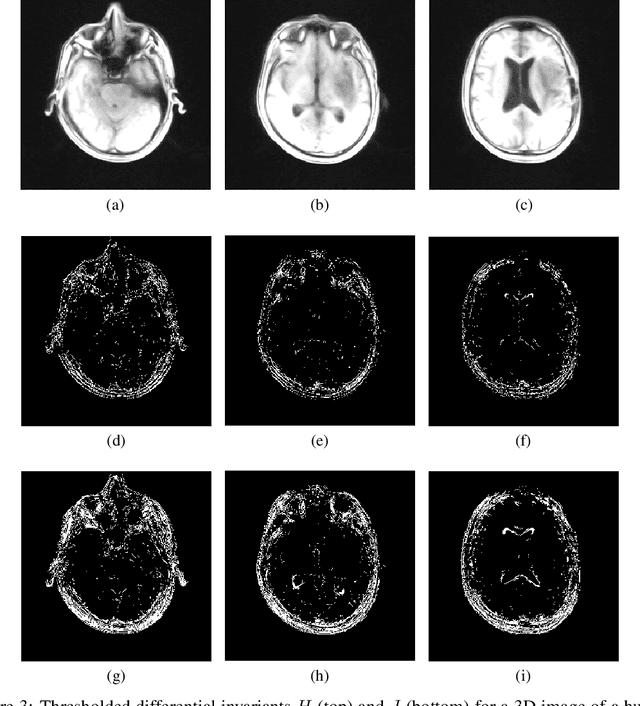
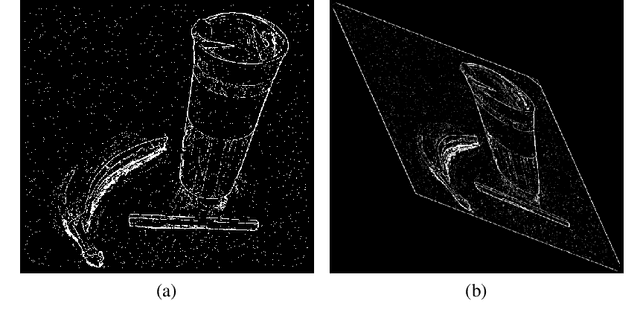
Abstract:Image feature points are detected as pixels which locally maximize a detector function, two commonly used examples of which are the (Euclidean) image gradient and the Harris-Stephens corner detector. A major limitation of these feature detectors are that they are only Euclidean-invariant. In this work we demonstrate the application of a 2D affine-invariant image feature point detector based on differential invariants as derived through the equivariant method of moving frames. The fundamental equi-affine differential invariants for 3D image volumes are also computed.
Invariants of objects and their images under surjective maps
Sep 22, 2015Abstract:We examine the relationships between the differential invariants of objects and of their images under a surjective map. We analyze both the case when the underlying transformation group is projectable and hence induces an action on the image, and the case when only a proper subgroup of the entire group acts projectably. In the former case, we establish a constructible isomorphism between the algebra of differential invariants of the images and the algebra of fiber-wise constant (gauge) differential invariants of the objects. In the latter case, we describe residual effects of the full transformation group on the image invariants. Our motivation comes from the problem of reconstruction of an object from multiple-view images, with central and parallel projections of curves from three-dimensional space to the two-dimensional plane serving as our main examples.
* This paper includes corrections and additions to the published version
 Add to Chrome
Add to Chrome Add to Firefox
Add to Firefox Add to Edge
Add to Edge